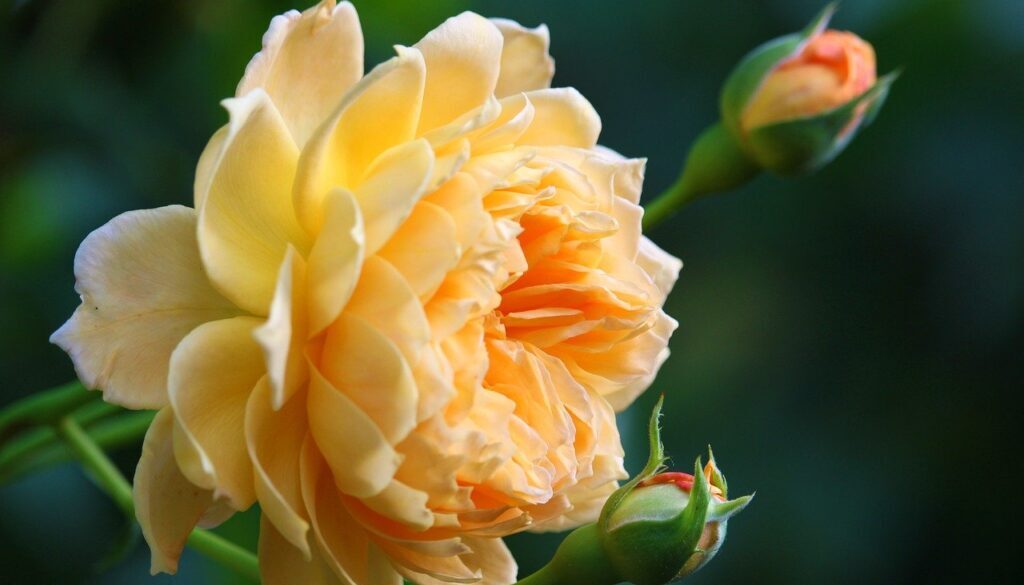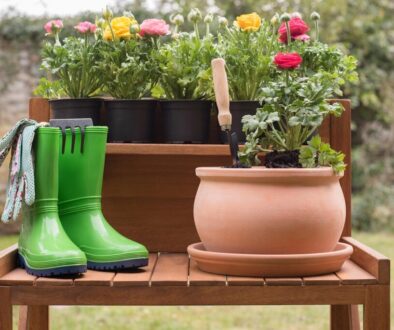Step-by-Step Guide to Planting Your First Rose Bush
Planting your first rose bush can feel intimidating, but it’s easier than you think! With a little preparation and care, you’ll soon have a stunning rose bush that rewards you with beautiful blooms. Let’s break it down into simple, actionable steps so you can enjoy the process and watch your garden flourish.
Choosing the Perfect Spot for Your Rose Bush
Before you grab your shovel, take a moment to find the ideal location for your rose bush. Roses love sunlight, so pick a spot that gets at least 6 hours of direct sun daily. Good air circulation is also key to preventing diseases, so avoid crowded areas.
Make sure the soil is well-draining—roses hate soggy roots! If your soil is heavy clay, consider amending it with compost or organic matter. This will improve drainage and provide nutrients for your plant.
Think about accessibility too. You’ll want to water, prune, and admire your roses easily, so choose a spot that’s convenient for you. A little planning now will save you headaches later!
Preparing the Soil Like a Pro
Once you’ve chosen the perfect spot, it’s time to prepare the soil. Start by digging a hole about twice as wide and deep as the rose bush’s root ball. This gives the roots plenty of room to spread and grow.
Mix the soil you’ve dug out with compost or well-rotted manure. This enriches the soil and gives your rose bush a nutrient-packed start. If your soil is sandy, add some peat moss to help retain moisture.
Before planting, soak the rose bush’s roots in water for about an hour. This rehydrates the plant and reduces transplant shock. While it’s soaking, you can double-check your hole’s depth and width.
Planting Your Rose Bush with Care
Now comes the fun part—planting your rose bush! Gently place the plant in the hole, making sure the graft union (the swollen area where the rose is grafted onto the rootstock) is just below the soil surface.
Spread the roots out evenly and backfill the hole with your soil-compost mixture. Tamp the soil down lightly to remove air pockets, but don’t pack it too tightly. Roses need loose soil for their roots to breathe.
Water the plant thoroughly after planting to help settle the soil. Add a layer of mulch around the base to retain moisture and keep weeds at bay. Keep the mulch a few inches away from the stem to prevent rot.
Watering and Feeding Your Rose Bush
Your rose bush is in the ground—now it’s time to keep it happy! Water deeply once or twice a week, depending on the weather. Aim for the base of the plant to avoid wetting the leaves, which can lead to fungal diseases.
Fertilize your rose bush every 4-6 weeks during the growing season. Use a balanced rose fertilizer or organic options like fish emulsion. Always follow the package instructions to avoid overfeeding.
Don’t forget to monitor your plant for signs of stress, like yellowing leaves or wilting. Adjust your watering and feeding routine as needed to keep your rose bush thriving.
Pruning and Maintaining Your Rose Bush
Pruning might sound scary, but it’s essential for a healthy, blooming rose bush. Start by removing dead or damaged branches, then trim back any crossing stems to improve air circulation.
Always use clean, sharp pruning shears to make clean cuts at a 45-degree angle. Prune in early spring when new growth appears, and again after each bloom cycle to encourage more flowers.
Keep an eye out for pests like aphids or black spot disease. If you spot trouble, treat it early with organic solutions or insecticidal soap. A little vigilance goes a long way in keeping your rose bush healthy.

Selecting the Right Rose Variety for Your Garden
Not all roses are created equal, and choosing the right variety can make all the difference. Are you looking for fragrant blooms, long-lasting cut flowers, or a hardy plant that can withstand your climate?
Hybrid teas are perfect for classic, elegant blooms, while floribundas offer clusters of flowers for a more abundant look. If you’re short on space, consider miniature roses or climbing varieties for vertical interest.
Research your local climate and soil conditions to find a rose that suits your garden. Many modern varieties are disease-resistant, making them ideal for beginners. Don’t be afraid to ask for recommendations at your local nursery!
Timing Your Planting for Success
When you plant your rose bush matters just as much as how you plant it. The best time to plant roses is in early spring or fall when the weather is cool, and the plant can establish roots without stress.
Avoid planting during the heat of summer or the freezing depths of winter. If you must plant during these times, take extra care to protect your rose bush from extreme temperatures.
If you’re planting bare-root roses, soak the roots overnight before planting to rehydrate them. For container-grown roses, gently loosen the roots before placing them in the ground. Timing and preparation are key to a smooth transition.
Digging the Perfect Hole
Digging a hole might seem straightforward, but there’s an art to it. Your hole should be wide enough to accommodate the roots without crowding them, and deep enough so the graft union sits just below the soil surface.
Use a garden fork to loosen the soil at the bottom of the hole. This encourages the roots to grow deeper and establish a strong foundation. If your soil is compacted, consider adding a layer of gravel for extra drainage.
Don’t forget to check the spacing between plants! Most roses need at least 2-3 feet of space to grow without competing for nutrients. Proper spacing also improves air circulation, reducing the risk of disease.
Planting Bare-Root vs. Container-Grown Roses
Bare-root and container-grown roses each have their own planting quirks. Bare-root roses are dormant and often more affordable, but they require a bit more care during planting.
For bare-root roses, create a small mound of soil in the center of the hole and spread the roots over it. This ensures the roots make good contact with the soil. Backfill the hole, gently firming the soil as you go.
Container-grown roses are easier to plant since their roots are already established. Simply remove the plant from its pot, loosen the roots, and place it in the hole. Backfill with soil and water thoroughly.
Watering Wisely for Healthy Growth
Watering is one of the most critical aspects of rose care. Too much water can lead to root rot, while too little can stress the plant. Aim for a balance by watering deeply but infrequently.
Use a soaker hose or drip irrigation system to deliver water directly to the roots. This minimizes water waste and keeps the leaves dry, reducing the risk of fungal diseases.
During hot, dry spells, you may need to water more often. Always check the soil moisture before watering—stick your finger about an inch into the soil. If it feels dry, it’s time to water.
Feeding Your Rose Bush for Maximum Blooms
Roses are heavy feeders, meaning they need plenty of nutrients to produce those gorgeous blooms. Start by applying a balanced fertilizer in early spring, just as new growth appears.
Follow up with regular feedings every 4-6 weeks during the growing season. Look for fertilizers specifically formulated for roses, as they contain the right balance of nitrogen, phosphorus, and potassium.
Organic options like compost, bone meal, and fish emulsion are excellent alternatives to synthetic fertilizers. They improve soil health over time and provide a slow release of nutrients.
Mulching to Protect and Nourish
Mulch is a rose bush’s best friend. It helps retain soil moisture, suppresses weeds, and regulates soil temperature. Apply a 2-3 inch layer of mulch around the base of your rose bush, keeping it a few inches away from the stem.
Use organic mulch like wood chips, straw, or shredded leaves. As it breaks down, it adds nutrients to the soil, improving its structure and fertility. Replenish the mulch as needed to maintain its benefits.
Mulching also protects your rose bush during winter by insulating the roots from freezing temperatures. It’s a simple step that makes a big difference in your plant’s health.
Pruning Like a Pro
Pruning is essential for maintaining the shape, health, and productivity of your rose bush. Start by removing dead, damaged, or diseased wood. This prevents pests and diseases from taking hold.
Next, trim back any crossing branches to improve air circulation. Aim to create an open, vase-like shape that allows sunlight to reach the center of the plant.
Always prune just above an outward-facing bud to encourage growth in the right direction. Use clean, sharp tools to make precise cuts and reduce the risk of infection.
Dealing with Common Rose Problems
Even the most well-cared-for rose bushes can encounter issues. Aphids, black spots, and powdery mildew are common culprits. The key is to catch problems early and address them promptly.
For aphids, spray your rose bush with a strong stream of water or use insecticidal soap. For fungal diseases like black spots, remove affected leaves and apply a fungicide.
Prevention is always better than cure. Keep your rose bush healthy by providing proper care, and it will be better equipped to resist pests and diseases.
Celebrating Your Rose-Growing Success
Growing roses is a rewarding journey that combines patience, care, and a little bit of magic. As your rose bush grows and blooms, take time to appreciate the beauty and fragrance it brings to your garden.
Don’t be discouraged by setbacks—every gardener faces challenges. Learn from your experiences and keep experimenting. With each season, you’ll gain more confidence and skill.
So, grab your gardening tools, put on your favorite hat, and get ready to plant your first rose bush. The world of roses is waiting for you, and there’s no better time to start than now.
By following this detailed guide, you’ll not only plant your first rose bush successfully but also create a thriving garden filled with beauty and joy. Whether you’re a novice or an experienced gardener, roses are a timeless addition to any outdoor space. So roll up your sleeves, embrace the process, and let your rose-growing adventure blossom!
Happy Gardening!









